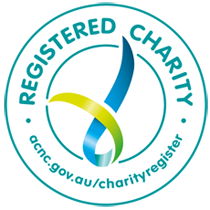Hey everyone, great to see you all! Today we’re tackling something simple yet profound—how to awaken to your true heart and step onto the path to Buddhahood. We’ll dig into teachings from the Shurangama Sutra, Avatamsaka Sutra, Heart Sutra, and Ten Good Deeds Sutra, breaking them down in plain language. Buddhism isn’t some lofty mystery; it’s a practical roadmap. If you’re willing, you can awaken to your true nature and unlock boundless goodness.
What’s Your True Heart? What’s a Straight Heart?
First off, the heart that chases delusions—that’s your spirit, your living awareness. But don’t get it twisted: anything you “see” as your true heart isn’t it—if you can see it, it’s something out there, not your real self. The Shurangama Sutra says the spirit is what runs after delusions, and it’s right here, crystal clear. Problem is, we’re always dragged around by wild thoughts—going in circles, beating around the bush, fawning over stuff, tossing out “maybe,” “probably,” or “close enough.” That’s not a straight heart. A straight heart is dead simple: if you know, say you know; if you don’t, say you don’t—no fluff.
In the Shurangama Sutra, Ananda drops to his knees, crying to the Buddha: “Since forever, I’ve just memorized stuff, never really practiced. Please, tell me the first step all Buddhas took to enlightenment.” Tons of masters—countless as the Ganges’ sands—were waiting to hear. The Buddha says: “There’s this samadhi called the ‘Great Shurangama King,’ showing everything. Every Buddha got there this way. Listen up.” Ananda bows, all ears. This part’s huge—it’s the heart of the sutra, the key to Buddhahood. The Buddha’s point? It’s all about a straight heart. Why? Only a straight heart stops the habit of chasing dreams and lets you awaken to the true heart of your clear, aware spirit.
What’s This Spirit? Form Is Emptiness, Emptiness Is Form
Your spirit is absolute, not some wishy-washy thing. It’s eternal, unchanging, not tagging along with delusions—it’s the clear awareness right now, and that’s you. The Heart Sutra says: “Form is emptiness, emptiness is form.” What’s that mean? Think of a computer screen: it shows text, pics, videos, games—all of it’s the screen. Everything shows up from your spirit based on your karma. We’ve been running on autopilot too long, though. We need to hit the brakes, stop, and then we’ll see this spirit can do tons of stuff to help others. How do you stop? Depends on you. If you’ve nailed the ten good deeds, you can just drop it all right now. But if you’ve got big issues—like the Nirvana Sutra calls “affliction barriers, karma barriers, and retribution barriers,” a triple whammy of sickness—you’ve got to clear those hurdles first before you can chill out.
Ten Good Deeds: The Foundation of It All
How do you practice? With the ten good deeds. The Ten Good Deeds Sutra lays it out: “Towns and villages stand on the earth; grass, trees, and forests grow from it. Same deal with the ten good deeds—humans, gods, hearers, solitary realizers, Bodhisattvas, and all Buddha-dharmas depend on this solid ground to make it.” Straight-up truth: no ten good deeds, no progress. It’s not killing, not stealing, not messing around, not lying, not gossiping, not cursing, not babbling, not craving, not hating, not being dumb. Stick to these, and what’s the payoff? Freedom! You can tap into it anytime, smooth as butter, no hiccups. Why? It’s a precept, like the Ten Good Precepts Sutra says—a baseline for practice.
Take it up a notch with the monk’s precepts—super pro-level. Know the ups and downs of every rule, and you’ll tune your body and mind fast, sliding into meditation, yoga, whatever, like it’s nothing. Those precepts are built for focus; keep them tight, and your straight heart shines through.
Knowing Your True Nature, Letting Go
The Avatamsaka Sutra says: “Know all things come from your own mind and don’t cling to them; once you get this, you can skillfully settle into the Bodhisattva path.” That’s the entry ticket. Realize everything—landscapes, sounds, shapes—is your mind at work, and there’s nothing to hold onto. Get that, and you’ll know how to live steady on the Bodhisattva path. Like a screen flashing wild images—it’s still just the screen, no need to grab anything.
And those thirty-two marks? You earn them. Master the ten good deeds, and you’ll glow with those marks, like a wheel-turning sage king. It’s not a freebie; it’s the fruit of your good work.
Wrap-Up: Awaken to Your True Nature with a Straight Heart
So, friends, the Buddha told Ananda the first step to enlightenment is a straight heart—no detours, no guessing, just “I know” or “I don’t.” Your spirit’s pure and can show anything. Hit the brakes with the ten good deeds, stop chasing, clear the obstacles, and you’ll see it can do tons to help others. Form is emptiness, emptiness is form—everything’s your mind playing out, nothing to cling to. Let’s use a straight heart to ditch delusions, hold the ten good deeds to reveal our spirit, awaken to our true nature, and walk the path to Buddhahood. Thanks, everyone!





